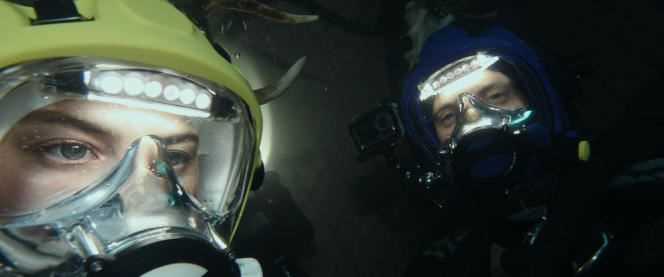The opinion of the “World” – Not to be missed
There is a lot of talk at the moment of a wave of so-called “genre” films in the French style. In recent years, young French filmmakers have been throwing themselves into fear or the fantastic. Their films are characterized by a particular hybridization process, which moreover points to their origin. With the rhetoric of terror and strangeness mingles a singular naturalism, willingly social, very established, identifiable in titles recently released as The Cloud, by Just Philippot, or Teddy, by Ludovic and Zoran Boukherma.
Alexandre Bustillo and Julien Maury, who sign, with The Deep House, their sixth feature film, do not fall into this category. Coming from a more specialized cinephilia, nourished by the conventions of a more exogenous cinema, Italian or American, little concerned by the desire for national roots, the two filmmakers work with a purer, more limited material, could we blame them , more implanted in a tradition of “cinema twice”, to which they nevertheless subject, with The Deep House, radical treatment.
The film summons, at the end of its story – a couple of divers, explorers of haunted places, discovers at the bottom of a lake a submerged house which will gradually reveal its secret – a mystique well known to amateurs, to base of witchcraft, satanic ceremonies, human sacrifices and murderous ghosts. Its originality, purely formal, but with a poetry touching abstraction, lies in what the starting postulate induces. Tea Deep house is a film in which the action takes place, for an hour, mainly underwater.
Unidentified threat
It is difficult not to be impressed, at first, by the technical feat of shooting such a film without the use of digital effects. The shots were taken in a setting six meters deep under the direction of director of photography Jacques Ballard, with seasoned divers as backings for the two main actors. The challenge is undoubtedly even more remarkable when one evokes the financial constraints of a film whose budget amounted to five million euros.
Everything seems to be subject to the regime of plastic instability. It is the underwater image, the vision itself, which seems to perpetually move and make all perception uncertain.
Disdaining the shock effects (there are some of them anyway), the film finds its true nature in the progression of the protagonists inside a disturbing place. The Deep House pushes back the limits of a fantastic cinema which feeds mainly on a wandering of the characters, and therefore of the spectators, within a strange and dangerous environment. Furniture, sinister objects (abandoned dolls, gigantic crucifixes), gradually discovered by swimmers, contribute to the birth of an atmosphere fraught with possible dangers. We think of the baroque poetry of a certain cinema, rather Latin, of the anguished wandering, the films of Mario Bava, sometimes of Dario Argento or Lucio Fulci, reveling in the discovery of a bric -a-brac of inanimate and frightening objects, announcing at the same time an evil past and an unidentified threat, vectors of this disturbing strangeness which could describe a certain cinematographic expressionism.
You have 15.68% of this article to read. The rest is for subscribers only.
